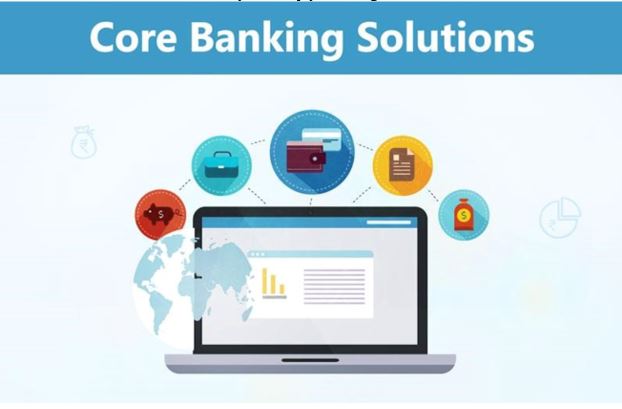Businesses require strong core banking or payment software to maintain regulatory compliance in the highly regulated fintech sector. This article will examine the eight main reasons why fintech companies’ regulatory compliance depends on the right banking system. This article will cover all the important things fintech companies should consider when choosing their core banking system, from features that make reporting easier to those necessary to comply with regulations.
Integrated reporting for regulations
A fintech company’s core banking system’s ability to provide regulatory reporting features is a crucial factor to consider. Fintechs must select a software solution that can effectively generate the required reports since achieving regulatory requirements requires timely and accurate reporting. This guarantees that financial institutions may easily submit necessary reports, quickly adjust to changing rules, and reduce non-compliance risk. Furthermore, it improves operational effectiveness by doing away with human report preparation requirements.
Furthermore, general ledger transactions should be the primary focus of right-core banking software, providing intra-company accounting and a complete chart of accounts. These functions are necessary for the timely production of financial statements, management accounts, continuing capital adequacy assessments, account reconciliation protection, and other tasks.
PSPs can centralize all accounting functions onto a single platform by selecting a core solution as complete bank compliance software. This guarantees the timely and correct generation of reports while streamlining reporting procedures.
Continual upgrades to the system
Maintaining a robust and secure financial infrastructure in core banking software requires regular system updates. Keeping up with regular upgrades and using the newest security features and policies is a proactive defense against changing cyber threats. Avoiding such vulnerabilities is essential since the financial sector is a popular target for bad actors.
These improvements allow for strengthening authentication procedures, improving encryption standards, and promptly patching any security flaws found. Sensitive financial data integrity and confidentiality are ensured by giving top priority to the integration of state-of-the-art security procedures. Maintaining a commitment to frequent updates is a matter of technology and a strategic requirement for protecting the financial stability and trust of institutions and clients.
Functionality to establish distinct client risk groups with rules unique to each
Navigating the complexities of financial risk management requires core banking software to create discrete client risk groups with specific rules for each. This feature allows financial institutions to distinguish between low-risk and high-risk customers, allowing for a more sophisticated approach to risk management.
The software should make it easier for high-risk clients to apply rules requiring extra payment verification procedures or transaction limits. This customized approach to risk management ensures a more accurate assessment of potential hazards. It enables financial organizations to implement focused policies that match the distinct risk profiles of their customers.
Essentially, in the ever-changing financial services market, strategically constructing varied client risk groups with unique rules within core banking software is a powerful tool for improving security, compliance, and overall risk resilience.
Possibility of establishing a customized workflow
Furthermore, the value of core banking capability is seen in its ability to create various workflows customized for different types of customers, offering an adaptable structure for routinely assessing compliance procedures. This adaptability is essential for adjusting to the different risk profiles present in the financial environment.
For example, low-risk customers can easily start payments without requiring the fintech company’s AML to approve them explicitly, simplifying the procedure for regular transactions. On the other hand, high-risk clients might go through a strict approval process that guarantees careful examination by compliance requirements.
Moreover, the system becomes more precise when payment amounts modify procedures. When a payment exceeds a predetermined threshold—say 1000 EUR—an AML team review is triggered, whereas payments below that amount can move forward without further restrictions. This sophisticated strategy improves operational effectiveness and strengthens compliance controls by matching the intricate workflow to the distinct risk attributes of various customer types and payment amounts.
Management of user access rights
The nuances of user rights design in core banking software are critical to fintech regulatory compliance. Compliance requires enforcing data protection laws, protecting private payment information, and setting up efficient governance. It’s also critical to mitigate insider risks.
A user with specific credentials cannot perform many critical tasks without adequate supervision in high-security core banking solutions. This covers handling red flag alerts from the Anti-Money Laundering (AML) system, processing payment transactions, approving transactions, and onboarding new customers. When governance and control are compromised, there are serious compliance issues.
The lack of the “four eyes” principle, which mandates that actions must be reviewed and approved by multiple authorized users, or employees of financial institutions, put financial institution workers at risk of legal trouble and makes them more vulnerable to fraud.
Strong user rights management is necessary to ensure appropriate governance and control over core banking software. This is putting role-based access controls into place to ensure users have the right permissions matched to their duties. Additionally, this function upholds the division of labor, reducing the possibility of unauthorized activity and enhancing compliance.
Adopting multi-step approval workflows is also essential to ensure that important operations, including those involving client payments, are examined and approved by several authorized users. This idea lowers the possibility of insider threats while improving accountability.
In addition to helping with regulatory compliance, user rights management makes traceability easier by making it easier to identify the people who are in charge of particular system operations. This facilitates inquiries and audits.
Integrations with service providers of AML, KYC, and KYB
Fintech companies give compliance with KYC/KYB and AML regulations a priority while navigating complex regulatory environments. In the present financial world, fundamental banking software must have robust AML/KYC/KYB capability. AML/KYC provider services offer the highest level of protection, and core banking software should either allow for new interfaces with chosen providers or integrate smoothly with these providers already in place.
Fintech companies may easily acquire vital identification and compliance data by integrating with AML/KYC/KYB suppliers. This facilitates real-time access to updated reports immediately within the back-office interface of the main banking software, removing the need to screen clients through several portals and blacklists.
Carefully examining every customer and utilizing data and records from the KYC/KYB procedure aids in creating thorough risk profiles. As a result, such hazards can be proactively identified and mitigated by ongoing client activity monitoring.
These KYC/KYB/AML services provide:
- Customer Identification: A thorough comprehension of the financial background of a customer.
- Continuous Customer Monitoring: Based on their risk profiles, clients are continuously scanned for any threats and questionable activity.
- Customer Due Diligence: a thorough examination of a client’s financial activities, particularly when that client has a higher risk profile.
- Transaction Monitoring is automating the process of reviewing every financial transaction to proactively prevent fraud, money laundering, and financing of terrorism.
Furthermore, adding facial recognition and other biometric authentication methods during onboarding improves user identification security and ease.
PSD3 and GDPR compliance when storing customer data
Fintech companies face difficulties adhering to complex rules such as Payment Services Directive 3 (PSD3) and the General Data Protection Regulation (GDPR). These particular requirements must be met by their fundamental banking systems.
Adroit management of core banking systems is necessary to navigate this dynamic regulatory landscape effectively. It also ensures that core banking systems are regularly updated with the newest security features and standards. Implementing state-of-the-art security measures is one of the top priorities for core banking software suppliers in order to comply with regulatory laws successfully.
Fintechs may now integrate sophisticated security solutions for fraud prevention and data protection, review compliance procedures regularly, and store customer data in conformity with GDPR and PSD3 regulations.

